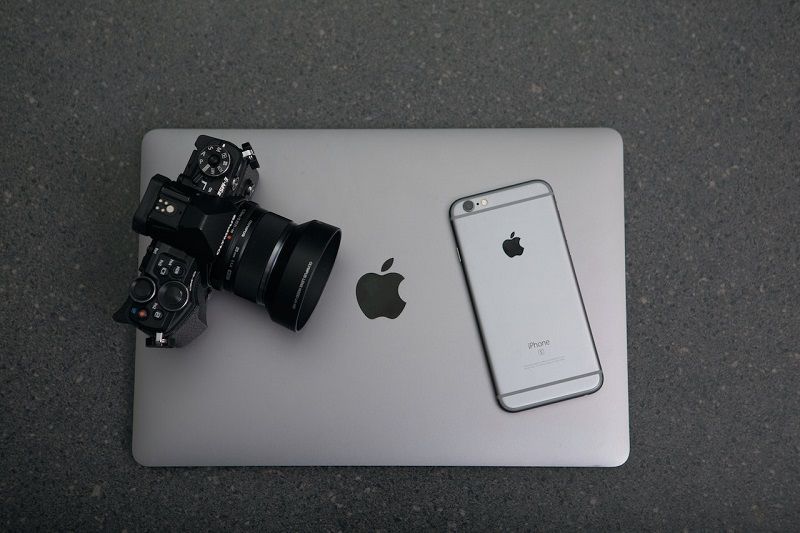Mobile Camera And Dslr | Final Words
Mobile Camera Vs DSLR
Mobile Camera Vs DSLR – It would be like comparing apples and oranges to compare smartphone cameras to DSLR cameras. Although apples and oranges give our bodies nutrition and sustenance, they are genetically distinct. They have various tastes and textures as a result. The same is true with DSLR cameras and mobile phones. Despite having the same fundamental job of taking pictures, they are “genetically” different on purpose. This article will examine the main distinctions between these two well-known imaging technologies.
7 Differentiating Factors Between Mobile Camera And Dslr
1. Sensors
Given that size is essential in this situation, this is the only factor distinguishing men from boys. This is because a larger sensor can capture more light. Better photographs result from that.
One of the reasons smartphone cameras don’t perform as well in low light is a tiny sensor (but at least there are several ways to brighten up your mobile shots in low light)
The core of any digital camera is the sensor. It is what records the light data that is later transformed into an image. Before the invention of digital cameras, the light was recorded on film.
2. Pixel
Millions of pixels cover the surface of a digital camera sensor. They are in charge of photographing the light that strikes the sensor to produce a picture. The term “megapixels” refers to the sum of these pixels.
Smartphone makers place a lot of emphasis on the camera’s megapixel count in their marketing materials, leading users to think that this is the feature that matters most. You ought to research the reality of smartphone camera megapixels.
Large pixels have the advantage of being less susceptible to digital noise than small pixels. Every single electronic device produces heat and has a noise floor by design.
As the electronic signal increases to brighten the image and increase the signal-to-noise ratio, the noise becomes more and more apparent.
3. Aperture
The diameter of the hole in the camera lens through which light enters is referred to as the aperture. The size of this hole, measured in f-stops, determines how light or dark the image will be.
The wider the hole and, eventually, the more light reaches the sensor, the lower the f-stop value. The mechanical diaphragm in the lens barrel of a DSLR camera regulates the amount of light passing through and reaching the sensor. You may change the aperture size by rotating a ring on the lens barrel.
4. Lens Quality
However, smartphone cameras do not at all have this capability. Yes, you can add external lenses to your phone’s camera, but they need to catch up to what true camera lenses are capable of.
To comprehend the main distinction between smartphone and DSLR lenses, you need to grasp what focal length is and how it impacts the image. I won’t go into depth because I cover it in great detail in this essay on mobile camera lens focal length. So make sure to look it up.
Quality is one of the advantages of DSLR and mirrorless camera lenses. Additionally, you can zoom or alter them to a different focal length.
5. Zoom
On the other hand, DSLR zoom lenses are constructed of several glass elements that move back and forth inside the lens barrel to either enlarge or reduce the image (zoom out). The focus length alters as these glass components move.
For instance, a lens described as 18-55mm can zoom in to a focal length of 55mm, which provides a tighter field of view from 18mm (wide-angle shot). All of this occurs without significantly lowering the image’s picture quality.
6. Flexibility
Most smartphone camera apps are comparable to the auto mode on a DSLR: good in most everyday scenarios but lacking in close control. You’ll be able to take whatever kind of picture you desire if you take the time to get to know your DSLR. But there are also easier things you can accomplish with a good camera that are much harder to do on your phone.
7. Cost
The most shocking part of this is here. Most likely, you already own a smartphone. Even while a DSLR demands a specific sum of money up front, only some cameras are prohibitively expensive.
You most likely will want to spend only a few dollars on a professional-grade camera if this is your first time purchasing one.
Considering this is an essential piece of gear, it makes sense to purchase a protective bag to guard against mishaps. Several high-capacity SD cards and any other necessary photography equipment should also be included in your budget.
Final Words
Because both phone and digital cameras perform admirably, you may conclude that each has pros and cons. I love both, but if image quality is your primary concern, you will need to get a DSLR to be satisfied.
If you want to take selfies and a few random pictures while out with your family or friends, you may choose the best smartphone without spending extra money on a digital camera and lens.

